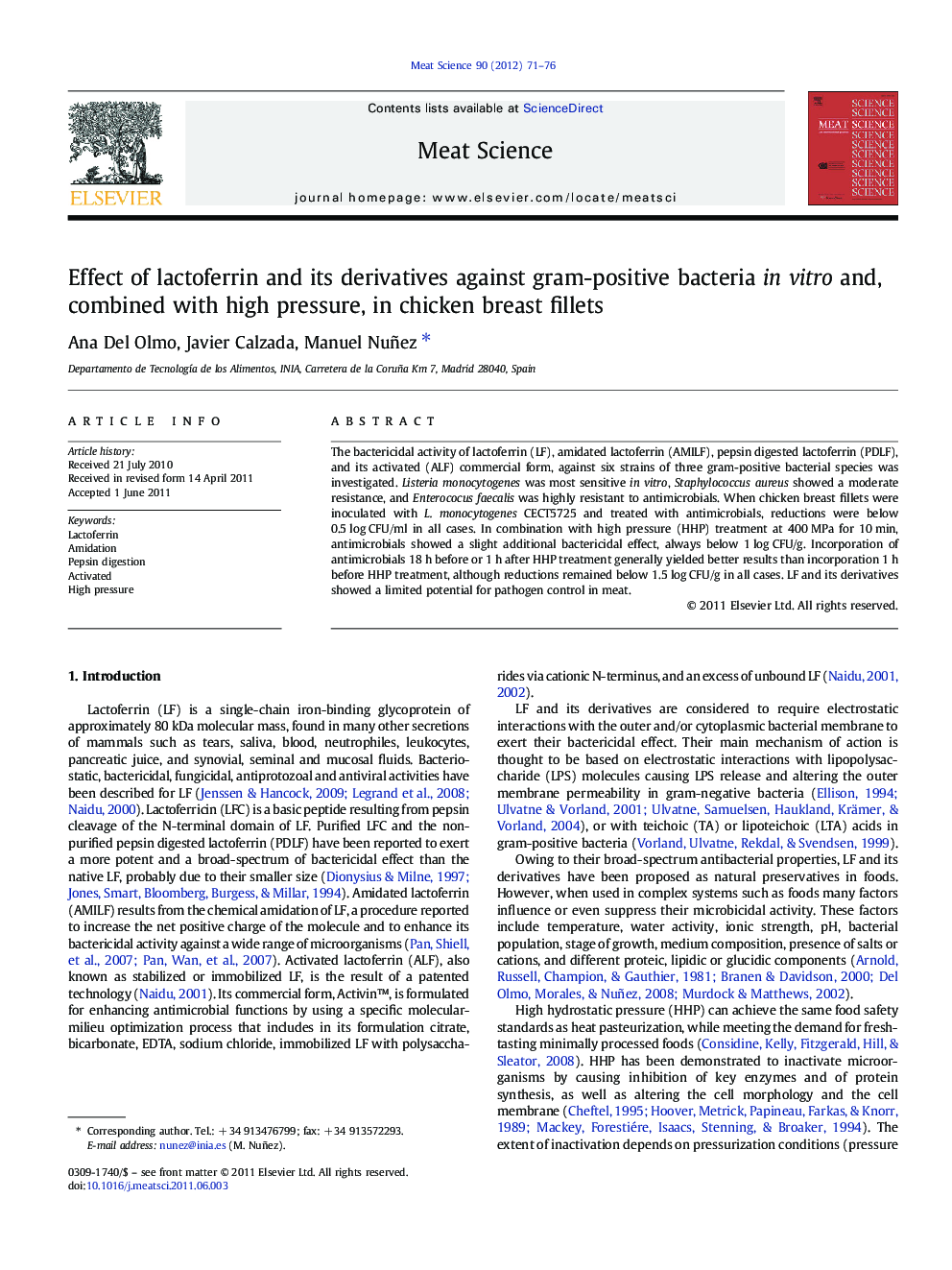| Article ID | Journal | Published Year | Pages | File Type |
|---|---|---|---|---|
| 5792712 | Meat Science | 2012 | 6 Pages |
The bactericidal activity of lactoferrin (LF), amidated lactoferrin (AMILF), pepsin digested lactoferrin (PDLF), and its activated (ALF) commercial form, against six strains of three gram-positive bacterial species was investigated. Listeria monocytogenes was most sensitive in vitro, Staphylococcus aureus showed a moderate resistance, and Enterococus faecalis was highly resistant to antimicrobials. When chicken breast fillets were inoculated with L. monocytogenes CECT5725 and treated with antimicrobials, reductions were below 0.5 log CFU/ml in all cases. In combination with high pressure (HHP) treatment at 400 MPa for 10 min, antimicrobials showed a slight additional bactericidal effect, always below 1 log CFU/g. Incorporation of antimicrobials 18 h before or 1 h after HHP treatment generally yielded better results than incorporation 1 h before HHP treatment, although reductions remained below 1.5 log CFU/g in all cases. LF and its derivatives showed a limited potential for pathogen control in meat.
⺠L. monocytogenes was the most sensitive species in vitro, and E. faecalis the most resistant, to lactoferrin and derivatives. ⺠Lactoferrin and derivatives lowered counts of L. monocytogenes in chicken breast fillets by less than 0.5 log units. ⺠Antimicrobials combined with HHP treatment at 400 MPa showed a slight additional bactericidal effect, below 1 log unit. ⺠Antimicrobial addition 18 h before or 1 h after HHP treatment achieved higher efficacy, which did not exceed 1.5 log units.
